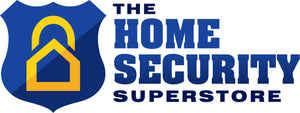It has been a while since we’ve written an article about identity theft, but in that seemingly long time the problem has not gone away. As a matter of fact it continues to grow and be the number one and fastest growing crime in the country according to all reliable sources.
In today’s story we will highlight more information about identity theft including the scope of the problem and potential ways to avoid having your identity stolen.
In the Internal Revenue Service Taxpayer Guide To Identity Theft they talk specifically about tax related identity theft which is much more common than you might think. They warn to use security software with firewall and antivirus protection and strong passwords. They also admonish to recognize and avoid phishing emails, threatening calls and texts from thieves posing as legitimate organizations such as banks and credit card companies and even the IRS. It goes without saying, to protect your personal data. Don’t click on links or download attachments from unknown or suspicious emails. They note that the IRS does not initiate contact with taxpayers by email, text messages or social media outlets.
See the main Identity Protection page for more information.
According to a Gallup survey seven in ten consumers say they “frequently or occasionally” worry about having computer hackers steal their credit card information from stores they have visited, and the same percentage worry about being a victim of identity theft. According to the Gallup survey no other fear of crime registers as high showing a lack of confidence and trust in the current payment system.
That, in part, is why a company by the name of SmartMetric has added biometric security to the credit and debit card creating a greater peace of mind and trust for the consumer and a more secure card for financial institutions. The company uses a miniature fingerprint scanner built inside the payments card that uses the persons fingerprint to activate the card’s EMV chip on the card surface-truly a high-tech solution to a big-time problem
Learn the warning signs, or red flags that may indicate your identity has been stolen.Those red flags could include:
Mail not being delivered to your home;
Unfamiliar charges or withdrawals from your bank account;
Bills for items that you never purchased;
Notices from an insurance company for medical services you didn’t receive;
Collection calls for debts that you did not incur;
IRS notices for tax returns you did not file.
If you notice any of those red flags, the first thing you should do is obtain a copy of your credit report and review it for any suspicious activity and if necessary, place a security freeze on your credit report so new lines of credit can’t be opened.
Then, if appropriate, report identity theft to authorities and subscribe to a reputable credit monitoring service.
This article in USA Today on how to avoid identity theft in 2016 has some good tips. Among them are some tried-and-true caveats that include:
- Never giving your personal information to anyone who contacts you by phone, text message or email;
- Get an EMV chip credit card-the latest in technology to protect your shopping;
- Make up a strong unique password for each of your accounts;
- Check your credit report at each of the three credit reporting agencies at least once a year;
- Opt out of all pre-approved credit card offers;
- Do not use your debit card for retail purchases because the law provides for much more protection from liability when your credit card is illegally used than when your debit card is fraudulently used.
From the venerable Forbes magazine comes this article on tips to protect you from ID theft. In the article they point out that in 2015, identity thieves stole $16 billion from 12.7 million US consumers-a new victim every two seconds. As previously noted, it is the fastest growing crime in the country. It is not all preventable but there are certain steps that you can take to lower your risk and here are some of them.
Public Wi-Fi access means just that-public. So when you’re sitting in a local Starbucks or your library don’t connect to an unknown Wi-Fi connection. Just because it’s free doesn’t mean it is safe.
Use smart passwords and update them regularly. Don’t use the same password for multiple sites.
Be careful with games and quizzes online. They are good fun but be careful when they ask you for personal information such as your mother’s maiden name or the street you grew up on.
Don’t fall for phishing or other scams that look on the surface to be legitimate. Verify that it is a legitimate site before sharing your data. Know that the IRS does not contact anyone by email or phone.
Pay attention to all fraud alerts sent to you by your bank.
Don’t just arbitrarily give out your Social Security number anytime somebody asks for it
And maybe most important is to monitor your credit report at least once a year. The three credit reporting agencies are required to give you a free copy of your report annually.
Sometimes no matter what you do, you may find yourself vulnerable to identity theft. If that happens, mitigate any damage to your credit or your house including contacting your financial institution, and put a credit freeze on your accounts.
Any one of our 12 locking mailboxes can provide the security you need against the major source of identity theft-the theft of your mail. When are you getting one?
What has been your experience with identity theft? Please share your stories here so that other readers may gain from what has happened to you.

